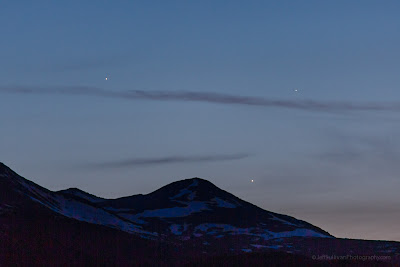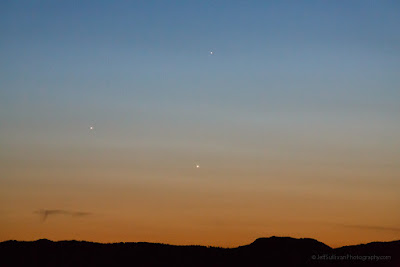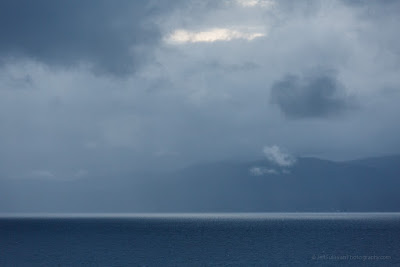Last night I caught a sun ray rainbow, just before sunset, at Topaz Lake on the Nevada/California border.
You may have noticed that rainbows move as the sun moves. White light contains all of the colors of the rainbow, and the rainbows we see are simply that light separated out into various wavelengths, which we perceive as colors. This doesn't happen like it does with a prism, where the rainbow comes out the back side of the prism and that color-separated light is projected onto something. Instead, raindrops do separate the colors of light through refraction, but instead of it escaping out the back, that light is reflected back out of the raindrop at a 42 to 43 degree angle. So everywhere you see rainbow color is a raindrop, and if you draw lines back from that rain drop to yourself and to the light source, those lines meet in roughly a 43 degree angle.
Someone standing a mile north of you may see a rainbow, but their rainbow will be coming from a different set of rain drops making a 43 degree angle back to the sun, and their rain drops at that angle will also trace a "rainbow-shaped" arc in the sky. This is why you can see rainbows while you drive, and they will appear to move and follow you (at that same angle to the sunlight) as you drive.
So as a photographer, if you don't like where the rainbow is, move! As long as you don't move so much that "your" rainbow doesn't fall off the end of the column of water it's coming from and disappear into dry air, you should be able to place the rainbow where you want it. Similarly, if you see the sun striking a column of water and the sun seems to be close to the right angle, simply move until you catch that 43 degree angle and can see and photograph the rainbow you anticipated that it was making.




